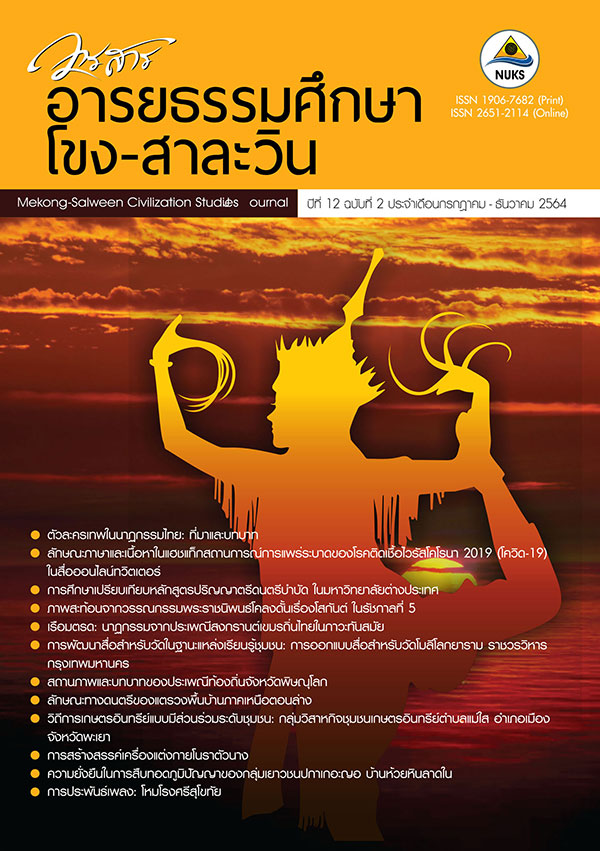Music Composition: Sri Sukhothai Prelude การประพันธ์เพลง: โหมโรงศรีสุโขทัย
Main Article Content
Abstract
Sri Sukhothai prelude was composed by Niti Amod, and it is used as the prelude song in Piphat Sapha ensemble of Sukhothai College of Dramatic Arts. There was a principle of composing music according to the Thai style by bringing Sukhothai dance song in Song Chan tempo (moderate) to expand into a Sam Chan tempo (slow) continued with Mahachai song by transforming it into a solo instrument, changing path, and then ending with Pleng Wa song. The concept of selections of songs for composition as follows: 1) The title of the song includes the word “Sukhothai” which means the dawn of happiness and the word "Mahachai" which is the name of the astrological auspices. Mahachai is the Pleng Naphat song that is performed in auspicious rituals. 2) Both songs have the same inner pitch, namely the sound that is the main sound of the tone (Tonic) matches the sound of Sol. The connection between songs can be performed harmoniously. Finally, 3) the music concepts are in the same direction. When it was composed, there was a good consistency and relationship. Sri Sukhothai Prelude had three methods of composing as follows: 1) using the multiplicative composing method to increase the rate by extending from the original two-tiered tempo up to a three-tiered tempo, 2) using a composing method to compose a new melody by converting a fundamental style to a solo, and 3) using a composing method to compose a new melody by changing the fundamental style into the changing path to extend the song from the Sukhothai dance at the original two-tiered tempo up to a three-tiered tempo and having used the multiplicative rhythm. It is extended from the number of notes in 32 bars to 64 bars by taking the notes in the original scores of the bars number 4, 8, 12, 16, 20, 24, 28, 32 significantly.
Downloads
Article Details
References
Pidkrach, N. (2020). Theory for Research and the Essence of Music. Lopburi: Natduriyang Printing Press.
Srisombat, R. (2011). Encyclopedia of Thai Dramatic Arts. Bangkok: ThanaThat Printing Co., Ltd.
Tramot, M. (1995). Duriyasarn. Bangkok: Kasikorn Bank Public Co., Ltd.
Tramot, M. (1997). Thai Music Studies, Academic Department. 2nd ed. Bangkok: Pikanate Printing Center.


